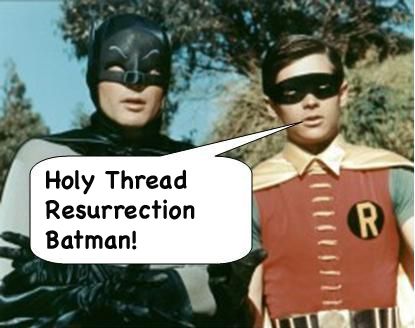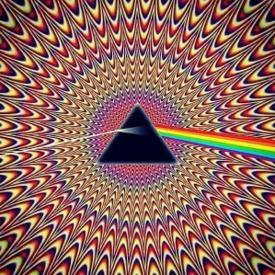Truvia and Purevia - Leave it on the Grocery Store Shelf
Replies
-
What about Stevia in the raw? is this product good or bad?0
-
sounds like marcel likes to hear himself talk and impress others with many (and I do mean many) words0
-
Where can you buy real Stevia?0
-
bump0
-
I find it hard to believe in a guy that advertises gastric bypass on his website.0
-
bump0
-
You get your health advice from Alton Brown?I gave up diet sodas and "diet" sugars. If I really need to add sugar to my tea...it is very minimal. After years of hearing, I finally believe that any sugar - "diet" or real does cause you to have cravings. Try it for awhile. It is amazing what you don't need after a bit. :drinker:
^^ ditto!! I also saw a segment with Alton Brown on the food network where he explains how horrible any sweatner is.. so, now I use just a tiny bit of the natural sugar (or honey, or rock sugar, etc) instead of equal (like i used to).0 -
I got my seeds for Stevia from McKenzie seeds
http://www.mckenzieseeds.com/product_detail.aspx?productID=132402
It was available at once of my local super market gardening centers this year also.0 -
If anyone wants to read the FAQ info from the Pure Via site, it's below.
Quite a bit contradicts the article in the OP, so either the author is lying or Merisant is.
1. What is PureVia™?
PureVia™ is the great-tasting, zero calorie, all natural sweetener derived from stevia rebaudiana bertoni, a plant native to South America and today found in many countries around the world including China, Brazil, Argentina, Paraguay, and South Korea. The primary sweetening ingredient in PureVia™ is Rebaudioside A, or Reb A, a high-purity extract of the sweetest component of the stevia plant. The purity level of Reb A and the blend of selected natural ingredients ensures that PureVia™ has a crisp, clean taste, without the bitter taste associated with many stevia products.
2. What is stevia?
Stevia (stevia rebaudiana), a member of the Chrysanthemum family, is a plant native to South America, where it has been used as a natural sweetener for hundreds of years. The stevia leaf contains glycosides, which are the sweetest components of the leaf. The two most abundant types of steviol glycosides are stevioside and Reb A.
Today stevia is used to sweeten foods and beverages in countries throughout the world. Stevia has been used commercially as a sweetener in Asia for more than 30 years.
For more information, please visit the Everything Stevia page.
3. What are the ingredients in PureVia™?
The main sweetening ingredient in PureVia™ is all natural Reb A. It is blended with erythritol (found in fruits such as grapes and melons), isomaltulose (found in honey and sugar cane juice), cellulose powder (which acts as the bulking agent), and natural flavors to create a sweetener with a clean, crisp taste and the granular texture of sugar.
4. What is Reb A?
Rebaudioside A (Reb A) is a natural glycoside sweetener extracted from the stevia plant. Reb A is the sweetest and second most abundant glycoside in the stevia plant (2-6 % of the dry leaf weight). It is also the most suitable component for use as a sweetener because it is more soluble in water and has a better taste profile. Reb A is more than 200 times sweeter than sugar and is non-nutritive.
Reb A is the main sweetening ingredient in PureVia™. Because of the high purity level of Reb A and the blend of other natural ingredients used, PureVia™ has a clean, sweet taste, without the bitter aftertaste often associated with other stevia products.
On December 17, 2008, Reb A became the first stevia extract to receive generally recognized as safe (GRAS) status from the Food and Drug Administration.
For more information, please visit the Everything Reb A page.
5. How is PureVia different than other stevia-based products that are currently on the market?
PureVia™ is derived from stevia rebaudiana, a plant found in China, Brazil, Argentina, Paraguay, and South Korea. What makes PureVia™ different from most stevia products is that PureVia™ is sweetened with a high purity extract of the stevia leaf, called Reb A.
In our research, Whole Earth Company has learned that using Reb A over other stevia extracts and using a purer form of Reb A enhances the taste of PureVia. Many other stevia products sold today are made from stevia extracts that have much lower purity levels than PureVia™.
PureVia™ is not artificially processed, contains natural flavors, has no preservatives or colors added, and all of its ingredients are certified non-genetically modified.
6. Is Reb A natural?
Yes, Reb A is a natural component of the stevia plant. Reb A is non-synthetic and nothing about Reb A is chemically or structurally altered when it is extracted from the stevia plant. PureVia™ is not artificially processed, contains natural flavors, has no preservatives or colors added and all of its ingredients are certified non-genetically modified (non-GMO).
7. How is Reb A made?
How are Reb A extracts prepared? (How are the glycosides extracted from the stevia leaves?) Reb A is extracted in a three-step process. First, water or alcohol (natural ethanol) is used to extract both Reb A and stevioside (the two main stevia extracts) from the stevia leaves. Next a resin is used to separate Reb A from stevioside and other components. The raw Reb A is then filtered, desalted and decolored before it is crystallized into very high purity Reb A.
What is the difference between steviosides and rebaudiosides? Rebaudiosides, specifically Reb A, is the sweetest and least bitter extract of the stevia leaf. Rebaudiosides make up 2-6% of the dry leaf weight of the stevia plant. Stevioside extracts are less pure and have a very bitter aftertaste. Steviosides make up 4-10% of the dry leaf weight.
Is steviol or stevioside a by-product of Reb A synthesis?When extracting Reb A it is very difficult to get 100% pure Reb A because rebaudiosides and steviosides naturally occur together in the stevia plant. The purity level of Reb A in PureVia™ is 97%.
8. Where will the stevia plants that will be used to make PureVia™ come from?
Today, Whole Earth Sweetener Company purchases our natural ingredients from select suppliers, and we also grow and process our own stevia in Paraguay.
9. Is PureVia™ organic?
No. While Reb A is 100% natural, it is not certified or grown organically at this time.
10. How many calories are in PureVia™?
One serving of PureVia™ provides zero calories.
11. What are the benefits of PureVia™ natural sweetener?
PureVia™ is an all natural sweetener with zero calories and only two carbohydrates per serving. PureVia™ allows consumers to satisfy their taste for sweetness without all the calories of sugar.
12. What's the benefit of natural versus artificial sweeteners?
This is mostly a matter of personal choice and personal taste. Some consumers prefer the taste and origin of a natural sweetener, such as stevia or now Reb A. However, others will still continue to enjoy the great taste and benefits of artificial sweeteners.
13. How and where will PureVia™ be available?
PureVia™ is available in many major grocery stores and select warehouse club stores throughout the U.S. Visit us at www.purevia.com to purchase online or to find a location near you.
14. Is PureVia™ safe?
Yes. PureVia™ is truly the next generation of sweet. It is a safe, all natural, zero calorie sweetener. An extensive safety database of more than 85 studies exist for Reb A (the sweetening ingredient in PureVia), steviol glycosides and steviol, which support the GRAS status for Reb A for use in tabletop sweeteners. Additionally, the other ingredients which provide the bulk and form of PureVia are also GRAS.
15. Is Reb A safe?
Yes. An extensive safety database of more than 85 studies exist for Reb A (the sweetening ingredient in PureVia), steviol glycosides and steviol. As of December 2008, the FDA granted Reb A generally recognized as safe (GRAS) status as a general purpose sweetener for food and beverages.
16. What research has been conducted to confirm the safety of Reb A? Are any long-term studies on Reb A safety available?
An extensive safety database of more than 85 studies exist for Reb A and other components of the stevia plant, which support Reb A’s use in tabletop sweeteners and other products. The data covers the standard range of safety studies for the determination of the safety of food ingredients, such as:
Absorption, distribution, metabolism and excretion (ADME)
Acute toxicity
Subchronic toxicity
Chronic toxicity
Genotoxicity
Reproductive/developmental toxicity
Carcinogenicity
In addition, there have been a number of special studies in animals and humans that address issues related to the safety of steviol glycosides, including potential effects on blood pressure and blood glucose control.
Reb A and steviol glycosides have also been reviewed by other authoritative bodies, including the FAO/WHO’s Joint Expert Committee on Food Additives (JECFA) and Food Standards Australia and New Zealand (FSANZ). Today, steviol glycosides are used to sweeten foods and beverages in many countries including Japan, South Korea, Malaysia, Taiwan, Russia, Israel, Mexico, Paraguay, Uruguay, Venezuela, Columbia, Brazil and Argentina. More than 100 foods and beverages throughout the world include one or more of the steviosides.
17. What is the Acceptable Daily Intake (ADI) of Reb A? (How much Reb A can be safely consumed?)
According to limits set by the Joint FAO/WHO Expert Committee for steviol glycosides, the ADI for Reb A is 12mg/kg bw/day. Thus, a 150-pound person could safely consume 30 packets of PureVia™ sweetener daily.
18. How does the body handle Reb A?
Reb A and other steviol glycosides are broken down into steviol by bacteria in the large intestine. Most of the steviol is then excreted in the feces. The remaining steviol is then absorbed and transported to the liver where it is attached to a carbohydrate (called a glucuronide) and ultimately excreted in the urine.
19. What is erythritol?
Erythritol is a sugar alcohol and belongs to a group of carbohydrate-based sweeteners. It is a white crystalline powder that is odorless with a clean, sweet taste similar to sucrose. Found in fruits like grapes and melons, erythritol has been part of the human diet for thousands of years. Like making cheese from milk or wine from grapes, erythritol is made through a natural fermentation process. Erythritol is distinct from other polyols because its caloric value is only 0.2 calories per gram.
20. How is erythritol metabolized?
The metabolic pathway of erythritol is different than glucose, sucrose or other sugar alcohols. Erythritol is rapidly absorbed in the small intestine through passive diffusion because of its small molecular weight. Erythritol is not metabolized and is rapidly excreted unchanged in the urine.
21. What is isomaltulose?
Isomaltulose is a natural disaccharide. Small amounts are found in honey and sugar cane juice. Isomaltulose is created during a natural fermentation of sucrose. It provides approximately four calories per gram with significantly lower impact on blood glucose levels and insulin response than glucose or sucrose.
22. How is isomaltulose metabolized?
Isomaltulose is fully digested, provides approximately four calories per gram and has significantly lower impact on blood glucose levels and insulin response than glucose or sucrose. It is metabolized to equal parts glucose and fructose in the small intestine, yet the rate of hydrolysis is only one-fifth to one-forth the rate of sucrose.
23. What is cellulose powder?
Cellulose powder is a natural white, odorless powder that is derived from fibrous plants. It helps give PureVia™ a flow and texture similar to sugar.
24. There have been concerns that stevia could cause mutations in the liver or lead to fertility problems in men. Are these still valid concerns?
Reb A is not stevia. Reb A is highly purified and is generally recognized as safe (GRAS) in the U.S. It is also approved by numerous regulatory agencies worldwide for use as a sweetener in foods.
25. Is Reb A safe for children?
Reb A has not been shown to have any adverse health effects, so children can certainly enjoy the taste of PureVia™.
26. Why was Reb A approved when FDA has not approved stevia due to safety issues?
Reb A is a highly purified stevia extract and undergoes a series of natural processes that ensure it retains its natural purity and qualities but does not hold the characteristic of the stevia plant that are of concern when classifying as safe. Further studies have been conducted on well characterized components of stevia, including Reb A, rather than crude stevia preparations.
27. Have other regulatory bodies reviewed Reb A’s safety?
Reb A and steviol glycosides have also been reviewed by other authoritative bodies, including the FAO/WHO’s Joint Expert Committee on Food Additives (JECFA) and Food Standards Australia and New Zealand (FSANZ). Today, steviol glycosides are used to sweeten foods and beverages in numerous countries including Japan, South Korea, Malaysia, Taiwan, Russia, Israel, Mexico, Paraguay, Uruguay, Venezuela, Columbia, Brazil and Argentina. More than 100 foods and beverages throughout the world include one or more of the steviosides.
28. Is Reb A approved for commercial use in any other countries?
Reb A and/or Steviol Gylcosides are approved in several other countries such as China, Japan, Russia and South America and have recently received approval in Australia/New Zealand and Switzerland.
29. Does Reb A qualify for FDA standards as a no-calorie sweetener?
Yes. PureVia™ has less than 5 calories per serving. According to FDA regulations, a food that has less than 5 calories can be labeled as no-calorie.
30. Does Reb A increase appetite or cause weight gain?
There is no evidence to suggest that Reb A would increase appetite. Since Reb A allows consumers to substitute a no-calorie sweetener in place of sugar, it is an easy way to reduce caloric intake. Consuming beverages and foods with PureVia™ instead of sugar, along with regular physical activity, may help people achieve their weight management goals.
31. Can PureVia™ replace sugar in the diet?
Yes, PureVia is an ideal substitute for sugar as it provides the sweetness without all the calories.
32. How does the sweetness of sugar compare to PureVia™?
One packet of PureVia™ is equivalent in sweetness to two teaspoons of sugar.
33. Does Reb A have medicinal properties?
Reb A is a non-caloric natural sweetener used in foods. It is not a pharmaceutical product.
34. How much erythritol is in a packet of PureVia™?
A packet of PureVia™ contains a minimal amount of erythritol, about one gram. Erythritol has a high digestive tolerance, which distinguishes it from other sugar alcohols.
35. Is PureVia™ gluten free?
PureVia™ is gluten free. It does not contain wheat, barley, rye or oats.
36. Are there any known allergies to PureVia™?
There are no known allergies to the ingredients in PureVia™.
37. How is PureVia™ tabletop sweetener packaged?
PureVia™ sweetener is packaged in the shape of sticks and the traditional packet. Each serving (one packet or stick) provides the sweetness equivalent of two teaspoons of sugar, yet contains zero calories and just two grams of carbohydrate.
38. What is the shelf life of PureVia™?
PureVia™ has a shelf life of two years.0 -
Truvia is much better than stevia because it is just like sugar but with no calories!0
-
this thread needs a tinfoil hat warning0
-

hahaaaa....i totally agree
:laugh:0 -
Wow!! People ACTUALLY read all that????
 0
0 -
I keep Stevia in the raw on hand, but use the baby packets of Truvia for my coffee. ANYTHING in high doses is unhealthy... this is no different.
If you believe every paranoid article out there, you'd be stuck eating bugs out of your backyard because everything else is ~evil~.0 -
gross. i've always said use the real stuff, and just use in moderation.0
-
Well done; you have probably angered many people, but you speak the truth!0
-
Wow!! People ACTUALLY read all that????

Wow, zowie, and kapow, they ACTUALLY do !!!!
Are you the official thread Police?0
This discussion has been closed.
Categories
- All Categories
- 1.4M Health, Wellness and Goals
- 394.9K Introduce Yourself
- 44K Getting Started
- 260.6K Health and Weight Loss
- 176.2K Food and Nutrition
- 47.5K Recipes
- 232.7K Fitness and Exercise
- 444 Sleep, Mindfulness and Overall Wellness
- 6.5K Goal: Maintaining Weight
- 8.6K Goal: Gaining Weight and Body Building
- 153.2K Motivation and Support
- 8.2K Challenges
- 1.3K Debate Club
- 96.4K Chit-Chat
- 2.5K Fun and Games
- 4.2K MyFitnessPal Information
- 16 News and Announcements
- 1.3K Feature Suggestions and Ideas
- 2.8K MyFitnessPal Tech Support Questions










